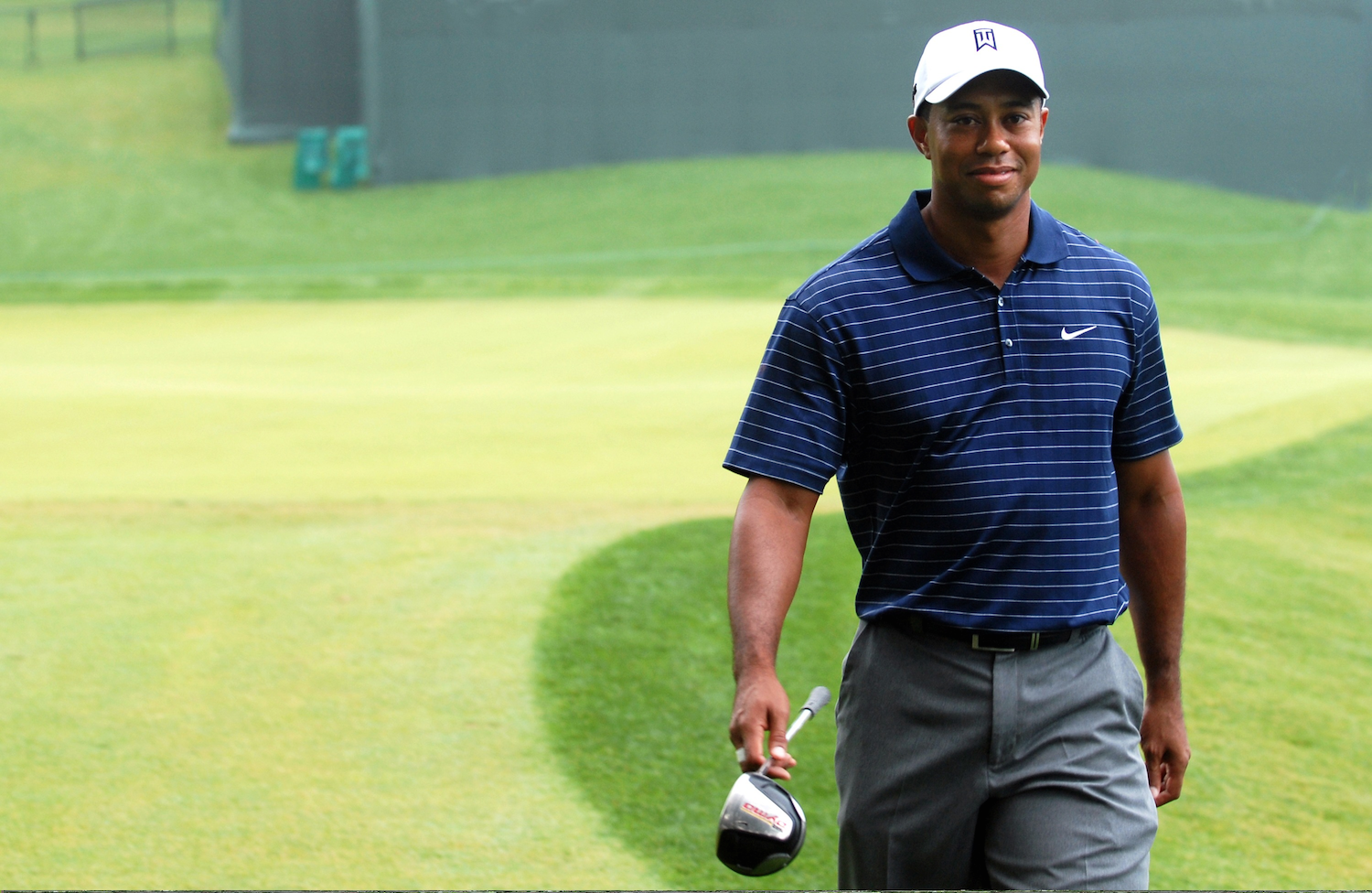
Photo Courtesy of Wikimedia Commons
Eldrick Tont Woods, better known as Tiger, thrust professional golf into the national spotlight in the late 1990s. Woods, virtually singlehandedly, dug golf out of the mass grave of unpopular sports, one inhabited by such games as curling, table tennis, fencing, and racquetball. Unfortunately, none of these other sports had a shining star to capture headlines and thrust the sport into the spotlight, but golf had Tiger Woods. As the Mozart-esque child prodigy of the golf world, Woods brought previously unmatched public attention to the game through utter domination of the sport.
From the first time he picked up a golf club, before he was even two years old, Tiger Woods was destined to be a golfer. By age three, Woods had broken 50 for nine holes, a feat that often takes years - — as well as bent golf clubs, ripped scorecards, and bruised knuckles — even for adults.
As he grew up, the prodigy dominated junior golf tournaments for years until graduating high school and entering Stanford University. At Stanford, Woods moved into the professional scene, and achieved such immense success so early that after two years, he left college to focus on his golf career. From 1996 to 2000, he rose to the top of golf rankings in record-breaking fashion. Bandwagon fans of all ages came in waves, breathing fresh life into the increasingly geriatric sport.
From 2000 to 2009, Tiger Woods was the face of professional golf. In this period, he won 12 of his 14 career major championship victories, second only to the legendary Jack Nicklaus, who won 18 majors from 1962 to 1986. The next most frequent winner of this century is Phil Mickelson, with only five. This period of dominance ensured Woods as, without a doubt, the greatest golfer of our time.
However, as the years went on, Woods struggled with his marital relations and knee surgeries as his golf game began to decline. Since 2009, when he first took a break from professional golf to sort out his marital problems, Woods has popped in and out of the sport with brief runs of success.
By July 2017, Tiger Woods was ranked #1,005 in the world, a sharp contrast from his five-year hold on the #1 ranking from 1999–2004. Back surgeries have complicated his performance in recent years. Before this last week, he had not golfed in a professional setting since February.
After taking the summer off to recover from his surgery, Tiger has returned to the game in his own tournament, the Hero World Challenge. Though it sounds like the title of a retro arcade game featuring blocky robots throwing punches in a steel cage, the Hero World Challenge is an exclusive tournament in the Bahamas with a competing field of 18 of the world’s best golfers. The superstar’s return to golf has put the limelight back on him and the sport of golf, as Tiger’s presence and the popularity of golf are closely correlated. The sport rises and falls as its prodigal son does, with many tuning in just to watch Tiger play. Even though Woods finished 9th overall on Sunday with a 68 in the final round, putting him at 8-under par overall, and Rickie Fowler took the title with a 61 in the final round and 15 under par overall, Fowler’s impressive victory is shadowed by Woods’ mere presence.
Tiger’s return may or may not impact the world of golf. This is certainly not the first time such a rebound has occurred — he has left and returned to professional golf multiple times in the last eight years. However, this is certainly one of his more promising showings; whether or not Tiger will be returning for good, he had an incredibly strong performance through all four rounds of this week’s tournament. The Tiger Woods of the 2000s wasn’t just incredibly strong - — he was impossibly, incomprehensibly, and uncontestedly strong. It is unlikely that this Tiger will ever regain such a huge advantage over the rest of the field.
Nonetheless, golf is unlike other sports in that age isn’t as much of a hindrance. Professional golfers represent much of the spectrum of the human life cycle, from the twenty-four year old Jordan Spieth to the forty year old Charley Hoffman to the forty-seven year old Phil Mickelson.
At forty-one years of age, Woods may be past his prime, but he has much of his career ahead of him. If he can stay healthy, potential exists for Woods to re-establish himself as a defining figure in professional golf.
As it stands, however, Tiger Woods remains another footman of the legion of washed up athletes whose personal issues derailed their respective athletic careers. Nevertheless, Woods still carries a legendary name and a presence that the world simply cannot ignore; the greatest player of a generation can never be counted out.
